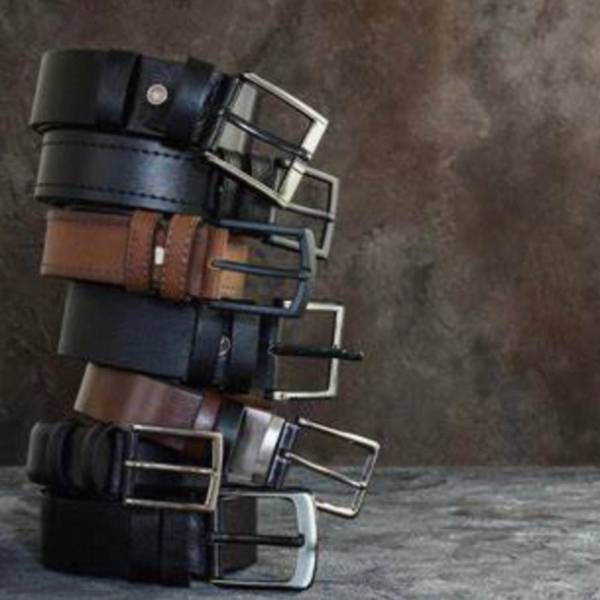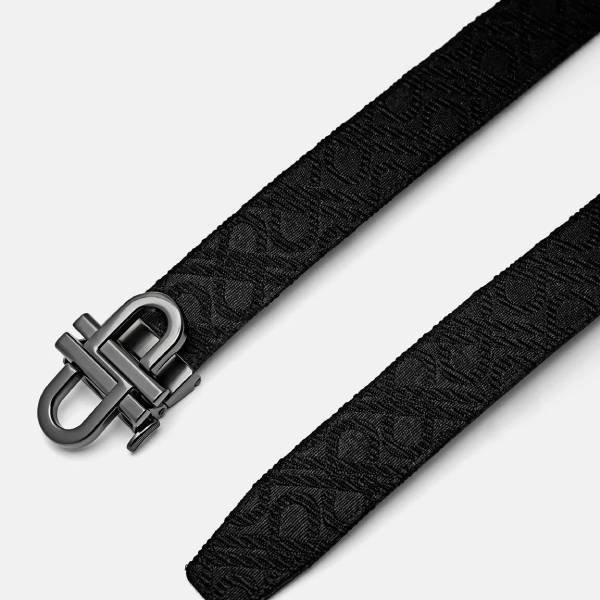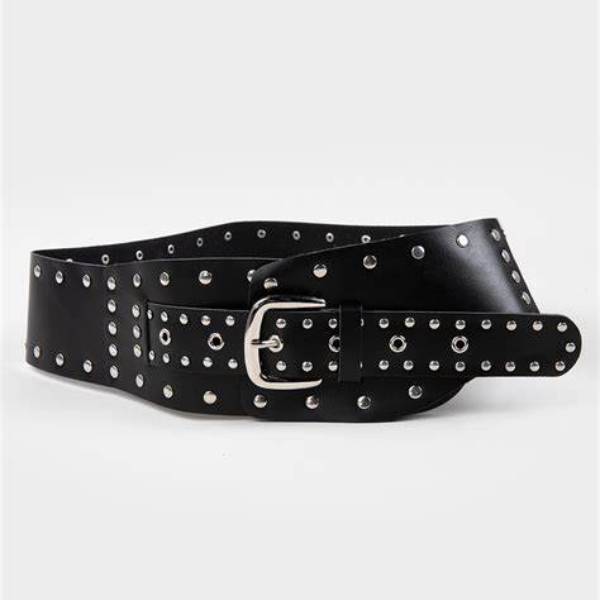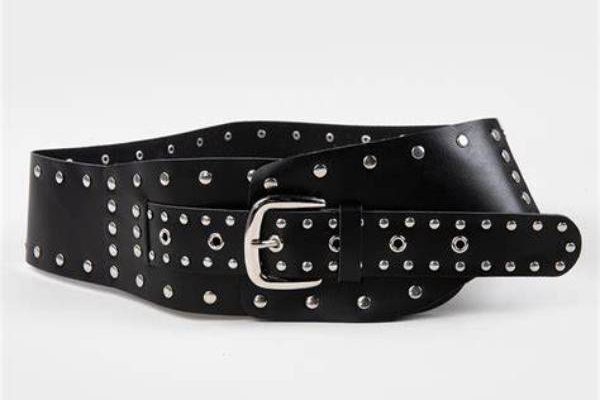Understanding Belt Sizing Basics
Selecting the correct belt size is crucial for comfort and style. Unlike other accessories, a belt must fit just right. It should hold up your trousers without squeezing your waist. It’s not just a matter of picking small, medium, or large. True belt sizing considers the length from the buckle to the most used hole. This is the belt’s true size. Your pant size is a good starting point, but not exact. Most belts have five holes. The third hole is where the belt should fasten.

This allows for adjustments. A proper belt size guide helps get this right. Measure your waist where the belt will sit. Use a tape measure for accuracy. Ensure the tape is snug, but not tight. Write down the measurement. This figure is your waist size, not your belt size. As a rule of thumb, your belt size should be 2-3 inches larger than your waist size. This accounts for clothing thickness. Read size labels carefully. Some brands may use different sizing standards. Double-check with the brand’s specific belt size guide to avoid mistakes.
Measuring Your Waist for the Perfect Belt Fit
Finding the right belt size starts with an accurate waist measurement. Many people mistake their pant size for their belt size. Yet, there’s a difference. Your belt size is not your pant size. It is typically 2-3 inches larger. To measure your waist for a belt, you need a flexible tape measure. Dress in the clothes you plan to wear with the belt. Place the tape where your belt normally sits.
Ensure it lays flat across your outfit. This accounts for extra fabric. Keep the tape snug but not tight. It should not dig into your skin. Record the number where the tape meets the zero mark. This is your waist measurement. Now, add 2-3 inches to this number. This is your belt size. Remember, the belt should fasten at the middle hole. If you find yourself in between sizes, round up to the nearest size available. This ensures a fit that allows for comfort and adjustments, if needed.
Men’s Belt Size Chart Explained
When purchasing a belt, a size chart is a crucial guide. Men’s belts use inches to indicate length. This length runs from the buckle’s end to the middle hole, not the strap’s full length. Typically, the size chart reflects waist measurements with corresponding belt sizes. Remember, the belt size is broader than the waist size. This is due to the extra layers of clothing.
A basic men’s belt size chart might list sizes from 30 inches to 46 inches or more. Each size often increases by two-inch increments. If your waist measures 34 inches, select a 36 or 38-inch belt. This ensures a comfortable fit over clothes. Try using a chart as a starting point. But always consider the material and design features that might affect the fit. A size chart is only a reference. Your comfort and the belt’s fitting to the third hole are most important. When in doubt, always opt for a slightly larger belt. You can adjust it for a perfect fit. When selecting a dance belt for men, it’s important to consider your waist size carefully, just as you would with a regular belt, ensuring you choose a size that allows for comfort and support during movement.

Women’s Belt Size Guidelines
When it comes to women’s belts, finding the right size can be a little trickier. Women’s clothing sizes vary more widely and do not always correlate to belt sizes. To ensure a perfect fit, follow these belt size guide principles:
- Measure Your Waist: Just like with men’s belts, start by measuring your waist. Use a flexible tape measure at the point where you usually wear your belts. Keep it snug but not too tight.
- Check the Size Chart: Most women’s belts will provide a size chart, often based on small, medium, and large sizes but also corresponding to waist measurements in inches. These range from extra small sizes around 24 inches to plus sizes exceeding 38 inches.
- Understand the Fit: Your belt should fasten comfortably on the middle hole. If a belt has five holes, the third one is your target. This allows room to adjust either tighter or looser as needed.
- Account for Outfit Thickness: If you’re wearing a thicker dress or a high-waisted skirt, you may need to go a size up. Remember to measure over the clothing you plan to wear.
- When in Doubt, Size Up: It’s better to choose a larger belt if you’re between sizes. You can always add additional holes but can’t extend the length of a belt that’s too small.
Belts are a fantastic way to add style to an outfit, but the right size is key to looking polished. Using this belt size guide, women can confidently choose a belt that looks great and fits perfectly. Choosing the right accessory can elevate your outfit, and a Balmain belt is a perfect example of how the right size and style can enhance your overall look. With our size guide, you can ensure that your Balmain belt not only fits perfectly but also adds that touch of sophistication to your ensemble.
How to Choose the Right Belt Size When Shopping Online
Shopping for belts online can seem daunting. Sizes may vary between brands and styles. Here’s a simple guide to help you pick the right belt size online. Follow these steps for a good fit:
- Check the Brand’s Size Chart: Before you buy, look at the size chart on the brand’s website. Compare your waist measurement to their recommendations.
- Read Product Descriptions: Look for information on how the belt sizes run. Some brands mention if their belts tend to run small or large.
- Know Your Waist Measurement: Have your current waist size ready. Remember to add 2-3 inches to get the correct belt size.
- Look at Customer Reviews: These can offer insights on the fit. Customers often state if they needed a size up or down.
- Understand Return Policies: In case the belt doesn’t fit, check if you can return it easily. Opt for online sellers with user-friendly return policies.
- Contact Customer Support: When in doubt, ask. Customer service can often provide additional sizing help.
By following these tips, online belt shopping becomes less guesswork and more assurance. Always invest in the best fit for comfort and style.
The Importance of Belt Width in Sizing
When choosing a belt, size isn’t the only factor; width also plays a key role. Different occasions call for belts of different widths. Casual settings often work well with wider belts, while formal attire usually pairs best with a slimmer belt. The width can affect how the belt fits through the loops of your trousers or skirts, and it can impact comfort and style. Selecting the right belt is crucial for both comfort and style, and a Montana Silversmith belt buckle can enhance any belt’s appeal, especially when considering the width to match the occasion.

For Formal Wear: A narrow belt width is standard. Look for widths around 1 to 1.5 inches for suits and dress pants. These slim belts slide easily through smaller loops and provide a sleek look.
For Casual Wear: Wider belts, such as those 1.75 to 2 inches, fit better with jeans and casual pants. They fill the loops more completely and offer a more laid-back style.
Women’s Fashion Belts: Often, women’s belts come in a variety of widths, from thin decorative belts to wider waist-cinchers. A thin belt can complement a dress or blouse, while a wider one might define the waist on a loose-fitting dress or tunic.
Keep in mind, not all pants or skirts can accommodate belts of every width. Always check the width of your trouser loops before buying a belt. A belt that’s too wide won’t fit, and one that’s too narrow may shift around and not provide the support you need. When shopping, remember these width guidelines along with the belt size guide for a perfect fit.
Adjusting for Belt Buckle Styles and Design
When buying a belt, consider the buckle style. This detail can affect the belt’s fit and look. Different buckles can add to the belt’s length, change where it fastens, and even alter how it lays against your body. Here are some tips for adjusting to various buckle designs:
- Factor in Buckle Size: Large, ornate buckles add extra length. Choose a belt that’s slightly shorter to compensate.
- Consider the Closure: Some buckles clip or snap differently. Test how they close to ensure a snug fit.
- Examine Thickness: A thick buckle might need more belt length. Try on the belt to see how it fits with your outfit.
- Check for Adjustability: Some belts have removable buckles. You can adjust them for a better fit or to suit different styles.
Remember, the right fit is not just about the belt size guide numbers. The buckle’s style plays a part too. Add these considerations to your search for the perfect belt. They will help you find one that fits well and complements your style.
Tips for Caring for Your Belts to Maintain Proper Size and Shape
Caring for your belts is crucial to keep them in good shape and maintain their proper size. Here are some tips to help you care for your belts effectively:
- Store Properly: Hang your belts on a belt rack or roll them loosely to prevent creases and maintain shape.
- Keep Dry: Avoid exposing your belts to moisture. If they get wet, dry them at room temperature away from direct heat.
- Clean Gently: Wipe your belts with a soft cloth. For leather belts, use a suitable cleaner and conditioner.
- Rotate Usage: Don’t use the same belt every day. Rotating between belts reduces wear and tear.
- Mind the Fit: Make sure your belt fits well. Over-tightening can cause unnecessary stress and deformation.
- Avoid Overexposure to Sunlight: Too much sun can fade and weaken the belt material, especially for leather belts.
- Handle Buckles with Care: Buckles can scratch easily. Be careful when putting on and taking off your belts.
By following these simple care tips, your belts will last longer and always look their best.
